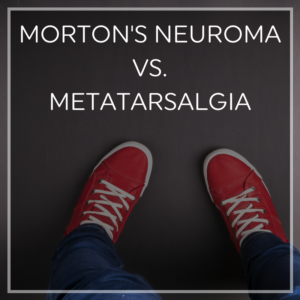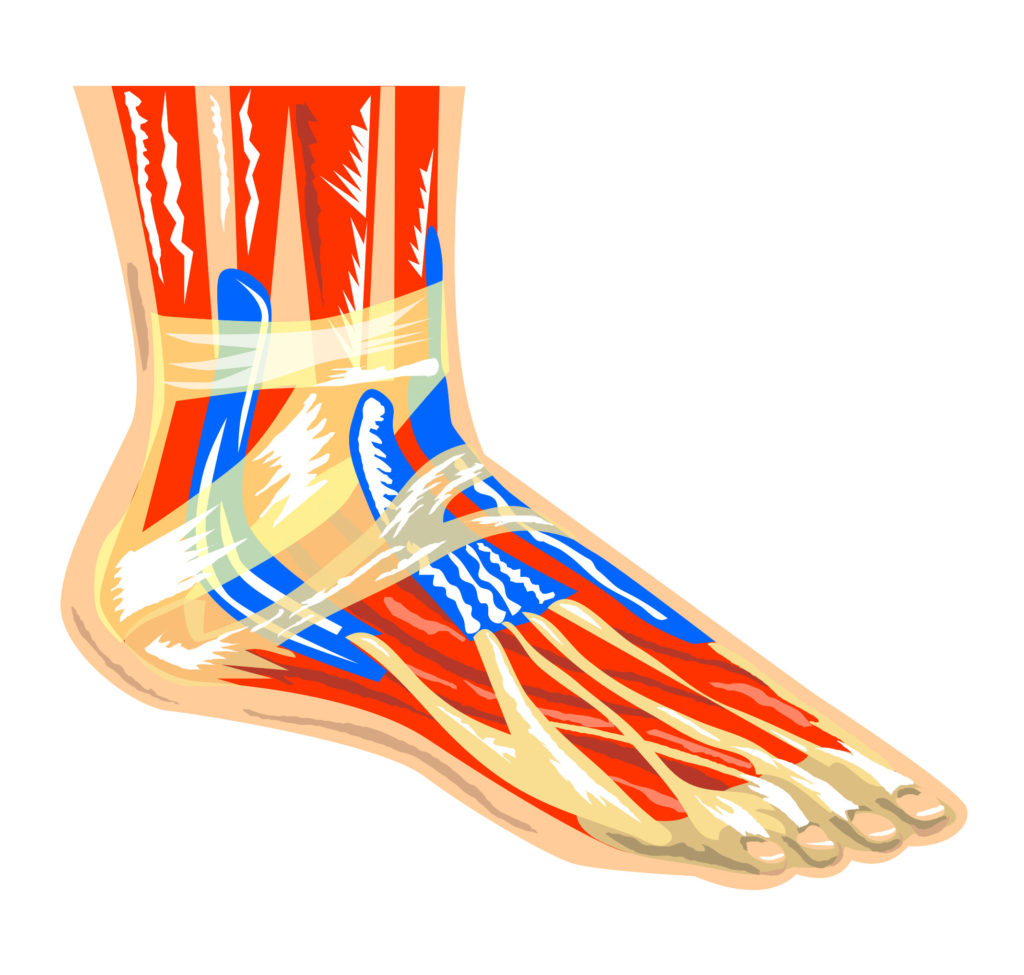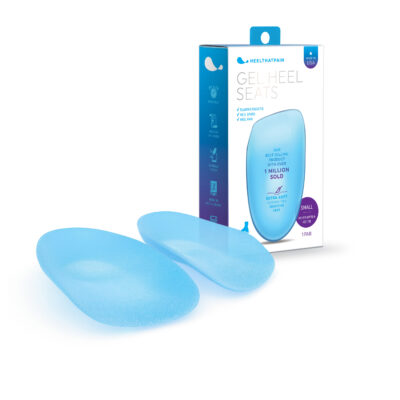 Pain in the ball of the foot usually points to one of two conditions: Morton’s Neuroma or Metatarsalgia. The key symptoms of both foot conditions include pain, numbness, and inflammation near the ball of the foot–which can make it very difficult to tell which condition you’re dealing with!
Pain in the ball of the foot usually points to one of two conditions: Morton’s Neuroma or Metatarsalgia. The key symptoms of both foot conditions include pain, numbness, and inflammation near the ball of the foot–which can make it very difficult to tell which condition you’re dealing with!
Fortunately, while Morton’s Neuroma and Metatarsalgia are similar in many ways, there are several notable differences that can help you and your doctor determine the source of the pain in the ball of your foot.
Common Causes and Symptoms of Metatarsalgia
Metatarsalgia is caused by trauma and inflammation in the metatarsal heads–the five bones that connect each of your toes to your foot. This pain and inflammation can have numerous causes, including abnormal arches that place pressure on the metatarsal heads, improper footwear, degenerative diseases like arthritis, nerve disorders, diabetes, Freiberg Disease, Sesamoiditis, obesity, or simply the aging process.
Symptoms of Metatarsalgia include the following:
- While pain can be severe and seem to affect the whole foot, the worst pain is concentrated at the ball of the foot.
- Numbness in the ball of the foot, at the base of the toes
- Pain that may be dull, aching, or sharp and increases (rather than improves) during physical activity
- Pain that increases when you place weight on the foot, stand on tiptoe, or go barefoot
- Pain that increases, rather than improves somewhat, while walking or moving
- The feeling that you have a small stone or object underneath your foot while you are walking, even when you are barefoot
Common Causes and Symptoms of Morton’s Neuroma
Morton’s Neuroma is typically understood to be caused by an injury to the nerves in the foot, or strain and injury to the toes that is often caused by wearing high heels or other shoes that place great strain on the toes and ball of the foot. This strain and injury results in swelling, pain, and a mass of tissue that forms around the nerves in the toes. While this mass of tissue and the word “Neuroma’ can sometimes bring a tumor to mind, the mass is not a true tumor, but rather a benign fibroma. Symptoms of Morton’s Neuroma include the following:
- Tingling, numbness, and pain in the ball of foot
- A sore, tender area between the third and fourth toes on the bottom of the foot
- A slight or pronounced mass of tissue between the third and fourth toes at the ball of the foot
- The feeling that you are standing on a small pebble, or that some foreign object is beneath your skin at the ball of your foot
- Pain that improves when not bearing weight on the foot
Morton’s Neuroma Vs. Metatarsalgia
While the differences between Morton’s Neuroma and Metatarsalgia can be subtle–especially when the pain is significant and seems to radiate across the entire ball of the foot–you and your doctor will be able to distinguish between them with the following cues:
- The pain from Morton’s Neuroma will be located between the third and fourth toes, on the ball of the foot. In contrast, the pain from Metatarsalgia will generally be felt across the entire ball of the foot, where the toes meet the foot.
- Morton’s Neuroma often presents as numbness and tingling before becoming worse and developing into pain, while Metatarsalgia more often begins as a dull pain that develops into sharper pain
- In Morton’s Neuroma, you may be able to feel a pronounced mass between the third and fourth toes
Treating Pain in the Ball of the Foot
Whether you’re experiencing Metatarsalgia or Morton’s Neuroma, it’s important to work with your physician to determine the root cause before you begin a course of treatment, since both of these conditions have numerous root causes. Determining the cause while also addressing acute pain and symptoms will help you find both immediate and lasting healing and relief.
Your doctor will look and your health history, lifestyle, and habits to determine the root cause of the pain in the ball of your foot. He or she will also examine your feet and may recommend x-rays to rule out other possible complications or conditions.
Once you and your doctor have determined the cause of your pain and identified the condition you’re dealing with, the course of treatment you follow will depend a great deal on severity of symptoms. In some severe cases, Morton’s Neuroma may require steroid injections or decompression surgery to relieve pressure on the nerves in the feet and remove the affected tissue. However, for mild symptoms of both Metatarsalgia and Morton’s neuroma, there are numerous at-home treatments that can help significantly, including stretches and foot exercises to strengthen the muscles in your feet and Achilles tendon to reduce the amount of pressure on the ball of your foot, orthotic inserts that raise your arch and reduce pressure on the ball of your foot, icing regularly, eliminating unsupportive and damaging footwear from your wardrobe, and NSAIDs like ibuprofen to reduce pain and inflammation.
Most cases of Metatarsalgia and Morton’s Neuroma can be successfully resolved with conservative treatments–especially if symptoms are addressed early and consistently. If you’re experiencing pain or numbness in the ball of your foot, don’t wait for symptoms to get worse!




I have similar pain at metatarsal 5. Sharp, feels like a toothpick broke. No pain when not weight bearing. 3 months of this. I’m 14 hours from you.can you help over the phone?
I recanted had a side effect from medication of pins and needles to my feet . I had pins and needles then burning numbing tingling picking came , once I stopped the meds most of all my symptoms went away but the balls of my feet were still hurting with horrific pain , can barely walk , can you help and tell me what has happened to the balls of my feet
my Mom is suffering w/severe foot pain for over 3 months-she has been to 3 different drs-3 diagnoses-no one has mentioned metatarsalgia or Morton’s Neuroma.
please help us!!!
How in the world do I know which one I have?! Both sound like they have same sumptoms. I’ve had two doctor opinions: one said Mortons, the othe said Meta